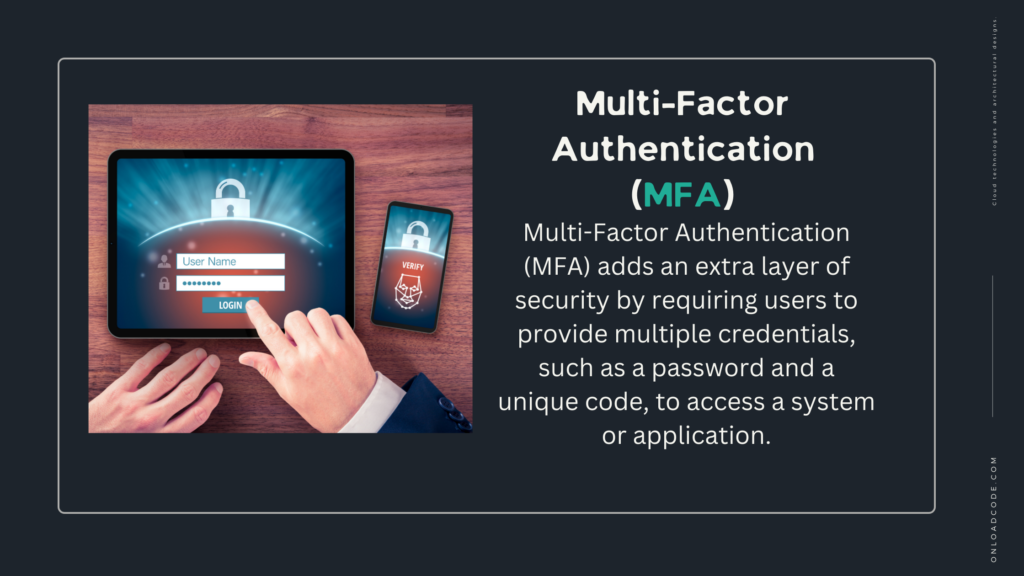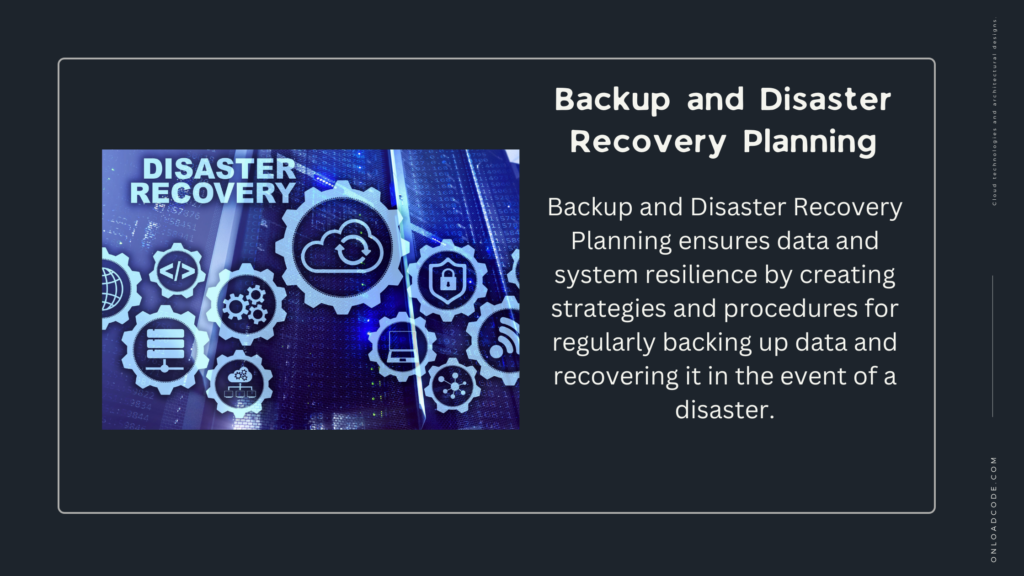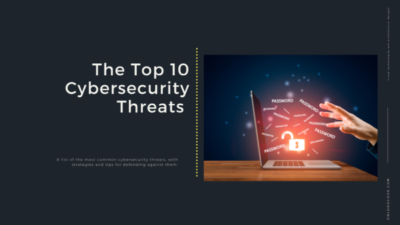Explore effective strategies and best practices for protecting your business from cyber threats. Learn how to assess vulnerabilities, implement strong security measures, and enhance employee awareness to safeguard your valuable assets.
This is the 6th article in the Cybersecurity: Securing the Digital Landscape series. In this article, we are discussing Protecting Your Business from Cyber Threats.
Introduction to Cyber Threats
In today’s digital age, businesses are increasingly exposed to various cyber threats that can have severe consequences. Understanding the landscape of cyber threats and the potential impact they can have on businesses is crucial for implementing effective security measures. Let’s delve into the different types of cyber threats and the significance of protecting your business against them.
Understanding the Landscape of Cyber Threats
Cyber threats encompass a wide range of malicious activities that target computer systems, networks, and data. These threats are constantly evolving, driven by the advancements in technology and the ever-expanding digital landscape. It is essential to stay informed about the different types of cyber threats to effectively defend against them. Here are some common cyber threats businesses face:
- Malware: Malicious software designed to infiltrate systems, steal data, or cause damage. Examples include viruses, worms, Trojans, and ransomware.
- Phishing: Deceptive emails or messages disguised as legitimate entities to trick individuals into revealing sensitive information or clicking on malicious links.
- Social Engineering: Manipulative techniques used to exploit human vulnerabilities and gain unauthorized access to systems or information.
- Denial-of-Service (DoS) Attacks: Overwhelming a system or network with excessive traffic, rendering it inaccessible to legitimate users.
- Insider Threats: Malicious or negligent actions by employees or insiders that compromise the security of the organization’s systems or data.
The Impact of Cyber Attacks on Businesses
The consequences of cyber attacks on businesses can be severe and wide-ranging. Here are some potential impacts:
- Financial Loss: Cyber attacks can result in significant financial losses due to data breaches, theft of intellectual property, disrupted operations, or reputational damage.
- Data Breaches: Unauthorized access to sensitive customer data can lead to legal and regulatory penalties, loss of customer trust, and damage to the company’s reputation.
- Operational Disruption: Successful cyber attacks can disrupt business operations, leading to downtime, loss of productivity, and disruption of critical services.
- Reputational Damage: Publicized cyber attacks can tarnish a company’s reputation, erode customer trust, and negatively impact future business opportunities.
- Legal and Regulatory Consequences: Non-compliance with data protection regulations can result in fines, lawsuits, and other legal repercussions.
It is evident that cyber threats pose significant risks to businesses, regardless of their size or industry. Taking proactive measures to protect your business against these threats is essential to safeguard your assets, maintain customer trust, and ensure long-term success.
In the next sections, we will explore various strategies and best practices for securing your business from cyber threats. By implementing these measures, you can strengthen your defenses and mitigate the potential impact of cyber-attacks.
Assessing Your Business’s Vulnerabilities
To effectively protect your business from cyber threats, it is crucial to assess your vulnerabilities and identify potential entry points for attacks. Additionally, evaluating your existing security measures will help determine their effectiveness and identify areas for improvement. Let’s explore these aspects in more detail.
Identifying Potential Entry Points for Cyber Attacks
- Network Infrastructure: Assess the security of your network infrastructure, including routers, firewalls, switches, and wireless access points. Look for any vulnerabilities that could be exploited by attackers to gain unauthorized access.
- Software and Applications: Regularly review the security of the software and applications used within your organization. Keep track of known vulnerabilities and apply patches and updates promptly to prevent exploitation.
- Employee Devices: Evaluate the security of employee devices such as laptops, desktops, smartphones, and tablets. Ensure that they have up-to-date antivirus software, strong passwords, and encryption measures in place.
- Remote Access: If your employees access company resources remotely, assess the security of remote access tools and protocols. Implement strong authentication methods and encryption to protect sensitive data transmitted over remote connections.
- Physical Security: Consider the physical security of your business premises, including access control systems, surveillance cameras, and secure storage for sensitive information. Physical breaches can lead to data theft or unauthorized access to critical systems.
Evaluating Existing Security Measures
- Security Policies and Procedures: Review your organization’s security policies and procedures to ensure they are comprehensive, up to date, and aligned with industry best practices. Regularly educate employees about these policies and reinforce the importance of adhering to them.
- Access Control: Evaluate the effectiveness of your access control mechanisms, such as user authentication, role-based access control (RBAC), and least privilege principles. Limit access rights to only what is necessary for each employee’s role.
- Security Awareness Training: Assess the effectiveness of your security awareness training programs for employees. Regularly educate them about common cyber threats, safe browsing practices, password hygiene, and how to identify and report suspicious activities.
- Incident Response Plan: Review your incident response plan to ensure it is robust and includes clear steps for detecting, containing, and mitigating cyber attacks. Conduct regular drills and simulations to test the effectiveness of the plan and identify areas for improvement.
- Third-Party Assessments: Consider engaging external security experts to conduct penetration testing and vulnerability assessments of your systems. Their expertise can uncover potential weaknesses that may have been overlooked internally.
By thoroughly assessing your business’s vulnerabilities and evaluating your existing security measures, you can gain valuable insights into potential weaknesses and areas for improvement. This information will guide you in implementing targeted and effective security strategies to safeguard your business from cyber threats.
Implementing Strong Access Controls
Implementing strong access controls is crucial to protect your business from unauthorized access and ensure that only authorized individuals can access sensitive data and systems. In this section, we will explore key aspects of access control and discuss best practices for their implementation.
User Authentication and Authorization

User authentication is the process of verifying the identity of individuals accessing your systems or data. It ensures that only legitimate users are granted access. Common authentication methods include:
- Passwords: Encourage the use of strong passwords that are complex, unique, and regularly updated. Implement password policies that require a minimum length, combination of characters, and regular password changes.
- Multi-Factor Authentication (MFA): Implement MFA, also known as two-factor authentication (2FA), to add an extra layer of security. This involves combining something the user knows (e.g., a password) with something they possess (e.g., a fingerprint, a security token, or a one-time password).
Authorization, on the other hand, is the process of granting or denying access to specific resources based on the user’s authenticated identity. Role-based access control (RBAC) and privileged access management (PAM) are commonly used authorization mechanisms.
Role-Based Access Control (RBAC)
RBAC is a widely adopted access control model that assigns permissions and privileges based on predefined roles within an organization. Instead of granting individual access rights to each user, RBAC simplifies access management by grouping users into roles and assigning permissions to those roles. This approach provides several benefits:
- Granular Access Control: RBAC allows you to define fine-grained access permissions based on job responsibilities. Users are assigned roles that align with their job functions, ensuring they have access to the resources they need and nothing more.
- Easy Management: RBAC simplifies access management by centralizing permissions and role assignments. When an employee changes roles or leaves the organization, their access can be easily adjusted by modifying their assigned role.
- Compliance and Auditability: RBAC helps organizations comply with regulatory requirements by ensuring appropriate access controls are in place. It also facilitates auditing and monitoring, as access permissions are clearly defined and tracked based on roles.
Privileged Access Management (PAM)
Privileged accounts, such as administrator or root accounts, have extensive access to critical systems and data. Securing and managing privileged access is crucial to prevent unauthorized access or misuse. Privileged Access Management (PAM) refers to the practices and technologies used to control and monitor privileged access.
- Just-in-Time Access: Implement just-in-time access for privileged accounts. This approach provides temporary and time-limited access to privileged credentials, reducing the exposure window for potential attacks.
- Least Privilege: Follow the principle of least privilege by granting privileged access only when necessary and for a limited period. Regularly review and remove unnecessary privileges from user accounts to minimize the risk of misuse.
- Session Monitoring and Recording: Implement session monitoring and recording for privileged accounts. This allows you to track and audit the actions performed by privileged users, helping detect and investigate any suspicious activities.
By implementing strong access controls, including user authentication, RBAC, and PAM, you can significantly reduce the risk of unauthorized access and strengthen the security posture of your business. These measures ensure that access to sensitive resources is granted based on user roles, credentials are properly managed, and privileged access is tightly controlled and monitored.
Securing Your Network Infrastructure
Ensuring the security of your network infrastructure is vital to protect your business from cyber threats. In this section, we will explore key measures to secure your network and safeguard your critical assets.
Firewall Configuration and Maintenance
Firewalls serve as a crucial line of defense by monitoring and controlling incoming and outgoing network traffic. Proper configuration and regular maintenance of firewalls are essential to maximize their effectiveness. Consider the following best practices:
- Default Deny Policy: Configure your firewall with a default deny policy, which means that all traffic is blocked unless explicitly permitted. This approach ensures that only authorized traffic can enter or leave your network.
- Rule-Based Filtering: Implement rule-based filtering to allow or deny traffic based on predefined rules. Specify the source IP addresses, destination IP addresses, ports, and protocols to control the flow of network traffic.
- Regular Updates and Patching: Keep your firewall firmware and software up to date to address security vulnerabilities and exploit fixes. Regularly check for updates provided by the firewall vendor and apply them promptly.
Intrusion Detection and Prevention Systems (IDPS)
Intrusion Detection and Prevention Systems (IDPS) play a crucial role in identifying and mitigating potential security threats. These systems monitor network traffic for suspicious activities and can take preventive actions to block or contain threats. Consider the following practices:
- Network Traffic Monitoring: Deploy IDPS solutions that continuously monitor network traffic for indicators of intrusion or malicious activities. This includes analyzing network packets, monitoring network logs, and applying machine learning algorithms to detect anomalies.
- Signature-Based Detection: Utilize signature-based detection techniques to identify known patterns or signatures of common attacks. This involves comparing network traffic against a database of known attack signatures and taking appropriate actions when a match is found.
- Real-Time Response and Mitigation: Implement IDPS solutions that can take immediate action upon detecting a potential threat. This may include blocking or isolating suspicious network traffic, generating alerts for further investigation, or triggering incident response procedures.
Network Segmentation and Isolation
Network segmentation involves dividing a network into smaller, isolated segments to restrict unauthorized access and limit the impact of a potential breach. By separating network resources based on their function or security requirements, you can minimize the lateral movement of threats. Consider the following strategies:
- VLANs and Subnetting: Utilize Virtual Local Area Networks (VLANs) and subnetting to logically separate network resources. This allows you to group devices and users based on their roles or departments and restrict access between VLANs, adding an extra layer of security.
- Access Control Lists (ACLs): Implement Access Control Lists (ACLs) to control the flow of traffic between network segments. ACLs define rules that permit or deny specific types of traffic based on source IP addresses, destination IP addresses, ports, and protocols.
- Zero Trust Networking: Adopt the Zero Trust Networking approach, where all network traffic, even within internal networks, is treated as potentially untrusted. This requires authenticating and authorizing all users and devices, regardless of their location within the network.
By implementing strong firewall configurations, deploying IDPS solutions, and adopting network segmentation practices, you can significantly enhance the security of your network infrastructure. These measures help protect against unauthorized access, detect and prevent intrusions, and limit the impact of potential breaches. Remember to regularly review and update your network security controls to adapt to evolving threats and emerging vulnerabilities.
Protecting Data and Information
Protecting the confidentiality, integrity, and availability of your business’s data and information is paramount to safeguarding sensitive assets and maintaining operational resilience. In this section, we will explore key practices for data protection and secure information management.
Data Encryption and Privacy Measures
Data encryption is an essential technique for securing sensitive information, both at rest and in transit. By converting data into an unreadable format, encryption ensures that only authorized individuals with the appropriate decryption keys can access the data. Consider the following approaches:
- End-to-End Encryption: Implement end-to-end encryption for data communication, ensuring that data is encrypted from the sender to the recipient. This prevents unauthorized interception or eavesdropping during transit.
- Data-at-Rest Encryption: Utilize data-at-rest encryption to protect sensitive data stored on devices, databases, or cloud storage platforms. Encryption algorithms and strong encryption keys should be used to secure the data, rendering it unreadable even if the storage medium is compromised.
- Access Control and User Authentication: Implement robust access control mechanisms to limit data access to authorized individuals. Require strong user authentication methods, such as multi-factor authentication, to ensure that only authenticated users can decrypt and access encrypted data.
Backup and Disaster Recovery Planning
Creating regular data backups and establishing a comprehensive disaster recovery plan is crucial for mitigating the impact of data loss, system failures, or cyber-attacks. Consider the following practices:
- Regular Data Backups: Implement automated and regular data backup procedures to create redundant copies of critical information. Backup media should be stored securely and offsite to ensure availability in case of physical or environmental damage.
- Backup Testing and Verification: Periodically test and verify the integrity and recoverability of your backups. This ensures that the backup process is functioning correctly and that data can be successfully restored when needed.
- Disaster Recovery Plan: Develop a detailed disaster recovery plan that outlines procedures, roles, and responsibilities in the event of a data breach, system failure, or natural disaster. The plan should include steps for data recovery, system restoration, and alternative operational arrangements.

Secure File Transfer and Storage
Securely transferring and storing files is essential to protect sensitive information from interception, unauthorized access, or tampering. Consider the following measures:
- Secure File Transfer Protocols: Utilize secure file transfer protocols, such as SFTP (SSH File Transfer Protocol) or HTTPS (Hypertext Transfer Protocol Secure), to encrypt file transfers and prevent unauthorized interception or modification.
- File Integrity Verification: Implement mechanisms to verify the integrity of transferred files. This can involve using checksums or digital signatures to ensure that files have not been altered during transit.
- Secure File Storage: Store files containing sensitive information in secure locations, such as encrypted databases or encrypted cloud storage services. Apply access controls and encryption to protect files from unauthorized access or data breaches.
By implementing robust data encryption measures, establishing backup and disaster recovery plans, and ensuring secure file transfer and storage practices, your business can significantly enhance data protection and minimize the impact of potential breaches or data loss incidents. Regularly assess and update these measures to adapt to emerging threats and evolving regulatory requirements.
Employee Education and Awareness
Developing a culture of cybersecurity awareness and equipping employees with the necessary knowledge and skills is crucial in defending against cyber threats. In this section, we will explore strategies for employee education and fostering a security-conscious workforce.
Security Training and Best Practices
Providing comprehensive security training to employees ensures they are equipped with the knowledge and skills to identify and respond to potential cyber threats. Consider the following practices:
- General Security Awareness Training: Conduct regular training sessions to educate employees about common cyber threats, such as phishing, malware, and social engineering. Train them on best practices for password hygiene, device security, and safe internet browsing.
- Role-Specific Training: Tailor training programs to specific roles and responsibilities within the organization. For example, IT staff may require specialized training on network security, while HR personnel should be aware of the risks associated with handling sensitive employee data.
- Continuous Training and Updates: Cyber threats evolve rapidly, so it is important to provide ongoing training to keep employees updated on the latest threats, attack techniques, and security measures. Offer refresher courses or provide timely updates on emerging threats through newsletters or internal communications.
Social Engineering Awareness
Social engineering attacks exploit human psychology to manipulate individuals into revealing sensitive information or performing actions that compromise security. Educating employees about social engineering tactics is vital. Consider the following strategies:
- Phishing Awareness: Train employees to recognize common phishing techniques, such as suspicious emails, fake websites, or unsolicited requests for personal or financial information. Encourage them to verify the authenticity of requests through alternate channels before sharing sensitive information.
- Impersonation and Tailgating: Raise awareness about the risks of impersonation and tailgating, where individuals gain unauthorized access by posing as legitimate personnel or by following someone through restricted areas. Teach employees to challenge unfamiliar individuals and report any suspicious activity.
- Simulation Exercises: Conduct simulated social engineering exercises, such as phishing simulations or physical security tests, to assess employee awareness and response. These exercises can help identify areas that require further training and reinforce good security practices.
Reporting Suspicious Activities
Establishing clear channels for reporting suspicious activities or potential security incidents empowers employees to contribute to the overall security posture of the organization. Encourage a culture of reporting and provide the necessary support. Consider the following steps:
- Anonymous Reporting Mechanisms: Provide anonymous reporting channels, such as a dedicated email address or a confidential reporting system, to encourage employees to report security concerns without fear of retribution.
- Incident Response Procedures: Educate employees on the proper procedures for reporting security incidents, including whom to contact and what information to provide. Ensure they understand the importance of timely reporting to minimize the impact of potential breaches.
- Recognition and Rewards: Acknowledge and reward employees who proactively report security incidents or demonstrate good security practices. This fosters a positive environment and encourages continued vigilance.
By investing in employee education and awareness, organizations can significantly reduce the risk of cyber threats caused by human error. Continuously reinforce security best practices, adapt training programs to address emerging threats, and create a supportive reporting culture to strengthen the overall security posture of the business.
Incident Response and Recovery
No organization is immune to cyber incidents, and it is essential to have a well-defined incident response plan in place. This section focuses on the key components of incident response and recovery, enabling businesses to effectively mitigate the impact of cyber incidents and restore normal operations.
Incident Response Planning and Procedures
- Developing an Incident Response Plan: Create a detailed incident response plan that outlines the roles and responsibilities of key personnel, communication channels, escalation procedures, and the step-by-step process for responding to different types of incidents. Regularly review and update the plan to align with evolving threats and business requirements.
- Establishing a Response Team: Designate a dedicated incident response team responsible for coordinating and executing the response plan. This team should comprise individuals with expertise in technical, legal, communications, and management domains.
- Incident Detection and Escalation: Implement robust monitoring systems and tools to detect and alert the team about potential security incidents promptly. Define escalation procedures to ensure critical incidents are escalated to the appropriate personnel and stakeholders for immediate action.
Business Continuity and Disaster Recovery
- Business Impact Analysis: Conduct a comprehensive business impact analysis (BIA) to identify critical processes, assets, and dependencies. This analysis helps prioritize the recovery efforts and allocate resources effectively during and after an incident.
- Business Continuity Planning: Develop a business continuity plan (BCP) that outlines the strategies and procedures to maintain essential operations during a cyber incident. Include provisions for alternative systems, backup infrastructure, and off-site data storage to minimize downtime and ensure business continuity.
- Disaster Recovery: Establish a robust disaster recovery plan (DRP) to restore normal operations after a cyber incident. This plan should outline the recovery processes, including system restoration, data recovery, and testing procedures to ensure the effectiveness of the recovery measures.
Post-Incident Analysis and Lessons Learned
- Post-Incident Assessment: Conduct a thorough analysis of the incident, including its causes, impact, and response effectiveness. Identify areas of improvement and lessons learned to enhance future incident response capabilities.
- Documentation and Reporting: Document the incident details, actions taken, and outcomes for future reference and compliance purposes. Prepare incident reports that capture the incident timeline, impact assessment, and remediation steps.
- Continuous Improvement: Use the insights gained from post-incident analysis to refine incident response plans, update security controls, and strengthen prevention measures. Regularly test and refine the incident response procedures through simulations and tabletop exercises.
By implementing robust incident response and recovery measures, organizations can minimize the impact of cyber incidents, reduce downtime, and safeguard critical business operations. Regularly reviewing and updating incident response plans, investing in business continuity, and learning from past incidents are crucial for maintaining resilience in the face of evolving cyber threats.
Partnering with Security Experts
In an increasingly complex cybersecurity landscape, businesses can benefit from partnering with external security experts to enhance their security posture and effectively manage cyber risks. This section explores the importance of engaging with cybersecurity service providers and implementing third-party vendor risk management practices.
Engaging with Cybersecurity Service Providers
- Assessing Security Needs: Identify your organization’s specific security needs and objectives. Determine areas where external expertise can add value, such as vulnerability assessments, penetration testing, security monitoring, incident response, or managed security services.
- Choosing the Right Service Provider: Conduct thorough research and due diligence when selecting a cybersecurity service provider. Consider factors such as their expertise, experience, reputation, client testimonials, certifications, and compliance with industry standards.
- Services Offered by Cybersecurity Service Providers: Cybersecurity service providers offer a wide range of services, including:
a. Vulnerability Assessments and Penetration Testing: Assessing system vulnerabilities and conducting simulated attacks to identify potential weaknesses and recommend remediation measures.
b. Security Monitoring and Incident Response: Continuous monitoring of networks, systems, and applications to detect and respond to security incidents in real-time.
c. Security Consultancy and Audits: Engaging security consultants to provide expert advice, perform security audits, and assist with developing security policies and procedures.
d. Managed Security Services: Outsourcing day-to-day security operations and management to a trusted service provider, including firewall management, intrusion detection, and security event monitoring. - Benefits of Partnering with Cybersecurity Service Providers: Collaborating with cybersecurity experts offers several advantages, including:
a. Specialized Expertise: Access to professionals with in-depth knowledge of the latest threats, trends, and best practices in cybersecurity.
b. Advanced Tools and Technologies: Leveraging cutting-edge security tools, technologies, and threat intelligence platforms that may be cost-prohibitive for individual organizations.
c. 24/7 Monitoring and Response: Round-the-clock monitoring and rapid response capabilities to address security incidents promptly.
d. Scalability and Flexibility: Tailored solutions that can scale with the organization’s evolving security needs and adapt to changing threat landscapes.
Third-Party Vendor Risk Management
- Assessing Vendor Security: Evaluate the security posture of third-party vendors and service providers before engaging them. Assess factors such as their security policies, data handling practices, incident response capabilities, and compliance with industry regulations.
- Contractual Obligations: Establish clear security requirements and expectations in vendor contracts. Include provisions for regular security assessments, incident reporting, and adherence to industry standards and best practices.
- Ongoing Monitoring and Auditing: Continuously monitor the security practices of vendors through periodic audits, vulnerability assessments, and compliance checks. Regularly review their security documentation and certifications to ensure ongoing compliance.
- Incident Response Planning: Collaborate with vendors to develop incident response plans that align with your organization’s requirements. Clarify roles, responsibilities, and communication channels in the event of a security incident involving the vendor’s services or systems.
- Continuous Vendor Assessment: Conduct regular assessments of vendor security to identify any changes or gaps in their security practices. Establish a framework for ongoing vendor risk management and periodic reassessment.
By engaging with cybersecurity service providers and implementing robust third-party vendor risk management practices, businesses can leverage external expertise and ensure a comprehensive approach to their security strategy. These partnerships enable organizations to enhance their security defenses, address vulnerabilities, and manage cyber risks effectively.
Staying Up to Date with Security Trends
In the rapidly evolving world of cybersecurity, it is crucial for businesses to stay informed about the latest security trends, threats, and vulnerabilities. This section emphasizes the importance of continuous monitoring, threat intelligence, and regular security assessments and audits to maintain a strong security posture.
Continuous Monitoring and Threat Intelligence
- Implementing Security Information and Event Management (SIEM): SIEM solutions enable organizations to collect, analyze, and correlate security event data from various sources. By monitoring network logs, system logs, and security events in real-time, businesses can proactively identify potential security incidents and take appropriate actions.
- Intrusion Detection and Prevention Systems (IDPS): IDPS tools provide an additional layer of defense by monitoring network traffic, identifying malicious activities, and taking preventive actions. They can detect and block known attack patterns, as well as anomalous behaviors that may indicate potential threats.
- Threat Intelligence Feeds: Subscribing to threat intelligence feeds provides valuable insights into emerging threats, attack trends, and indicators of compromise (IOCs). This information helps organizations proactively update their security controls and defenses to mitigate potential risks.
- Security Incident and Event Management (SIEM): SIEM platforms enable centralization and correlation of security events, logs, and incidents. By aggregating data from multiple sources, organizations can gain a holistic view of their security posture, detect anomalies, and respond promptly to security incidents.
Regular Security Assessments and Audits
- Vulnerability Assessments: Conducting regular vulnerability assessments helps identify weaknesses in systems, networks, and applications. By using automated tools and manual techniques, organizations can discover vulnerabilities and prioritize remediation efforts based on the level of risk.
- Penetration Testing: Penetration testing, also known as ethical hacking, involves simulated attacks to identify vulnerabilities that could be exploited by malicious actors. By conducting controlled tests, businesses can identify weaknesses and address them before attackers have a chance to exploit them.
- Compliance Audits: Compliance audits evaluate the organization’s adherence to relevant security standards and regulations, such as the Payment Card Industry Data Security Standard (PCI DSS) or the General Data Protection Regulation (GDPR). These audits help ensure that security controls are implemented correctly and that sensitive data is adequately protected.
- Security Policy Reviews: Regular reviews of security policies and procedures are essential to align security practices with industry best practices and changing regulatory requirements. Organizations should assess and update their security policies to reflect emerging threats, technology advancements, and lessons learned from security incidents.
By staying up to date with security trends, leveraging continuous monitoring and threat intelligence, and conducting regular security assessments and audits, businesses can strengthen their security defenses and effectively respond to emerging threats. It is important to adapt security measures to address evolving risks and ensure ongoing protection of valuable assets and sensitive data.
Conclusion
In today’s digital landscape, protecting your business against cyber threats is of paramount importance. This section provides a summary of the key strategies and best practices discussed throughout the article to help you safeguard your business and mitigate the risks posed by cyber threats.
- Understand the Threat Landscape: Stay informed about the latest cyber threats and attack vectors relevant to your industry. Awareness of emerging risks allows you to prioritize and allocate resources effectively.
- Establish a Layered Defense: Implement a multi-layered security approach that combines various security controls and technologies. This includes strong access controls, network segmentation, encryption, and advanced threat detection mechanisms.
- Educate and Empower Employees: Invest in comprehensive security awareness training programs to educate your employees about the importance of cybersecurity, common attack vectors, and best practices for maintaining a secure work environment. Encourage a culture of security-conscious behavior and empower employees to report any suspicious activities promptly.
- Develop an Incident Response Plan: Prepare for security incidents by creating an incident response plan that outlines clear steps to detect, contain, eradicate, and recover from cyber attacks. Regularly test and update this plan to ensure its effectiveness.
- Engage Security Experts: Consider partnering with cybersecurity service providers or consultants who specialize in protecting businesses from cyber threats. These experts can provide valuable insights, conduct security assessments, and offer guidance on implementing robust security measures.
- Stay Compliant: Ensure your business adheres to relevant regulatory requirements and industry standards. Compliance with data protection laws and regulations not only helps protect sensitive information but also enhances customer trust.
- Regularly Update and Patch Systems: Keep your software, operating systems, and network infrastructure up to date with the latest patches and security updates. Outdated software can be vulnerable to known exploits and can be easily targeted by cybercriminals.
- Backup and Disaster Recovery: Implement regular data backups and establish robust disaster recovery procedures. This ensures that even in the event of a security incident, your business can quickly recover and resume operations with minimal disruption.
By adopting these practices, your business can significantly reduce the risk of falling victim to cyber threats and enhance its overall security posture. Remember, cybersecurity is an ongoing effort that requires continuous monitoring, adaptation, and collaboration between technology, people, and processes.
My articles on medium







